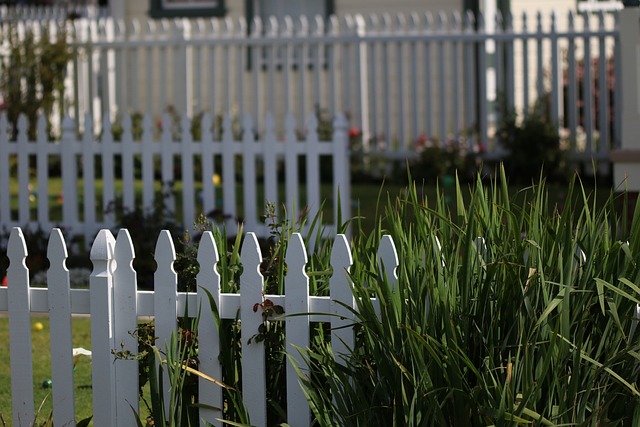Introduction:
Elevate your outdoor space with fence staining and sealing—a transformative process that not only enhances aesthetics but also safeguards your wooden fences. This comprehensive guide delves into the multifaceted benefits of staining, from protecting wood against weather damage to adding a splash of color to your yard. We’ll navigate choosing the perfect stain, mastering the sealing process, and offering essential maintenance tips to ensure your fence’s longevity. By the end, you’ll be armed with the knowledge to make informed decisions for your wooden fence care.
- Understanding Fence Staining Benefits
- Choosing the Right Stain for Your Fence
- The Sealing Process: Protection and Durability
- Maintenance Tips for Longevity
Understanding Fence Staining Benefits
Fence staining and sealing are essential steps to maintain and enhance the beauty of your wooden fence. By understanding the benefits, homeowners can make informed decisions about investing in this process. One of the primary advantages is prolonged protection against elements like sunlight, rain, and snow, which can fade and deteriorate wood over time. Staining creates a protective barrier, preserving the natural color and grain of the wood while shielding it from moisture absorption, thus preventing rot and warping.
Additionally, staining offers improved aesthetics, allowing you to transform your fence into a stunning feature. It provides a wide range of colors and finishes to suit various styles and preferences, from subtle natural tones to bold, eye-catching shades. Sealing further enhances this by adding an extra layer of protection, filling pores in the wood to prevent stain absorption and ensuring longer-lasting results. This process not only preserves but also enhances the fence’s curb appeal, making it a valuable addition to any outdoor space.
Choosing the Right Stain for Your Fence
When considering fence staining and sealing, selecting the appropriate stain is a crucial first step. Different stains offer various levels of protection and aesthetic appeal. Water-based stains, for instance, are environmentally friendly but may require more frequent reapplication due to their lighter color and less robust formula. On the other hand, semi-transparent and transparent stains provide better protection against elements like UV rays and moisture while still allowing some natural wood grain to show through. Solid or opaque stains offer the most extensive coverage and can completely transform the look of your fence, but they might obscure the wood’s character unless applied with care.
Consider your climate and exposure to elements as well. In regions with high sunlight intensity or frequent rainfall, opt for a fade-resistant or UV-protective stain to ensure longevity. For fences in more shaded areas, a slower-drying stain can help achieve an even, smooth finish. Always read the product labels and consider testing a small area first to ensure the chosen stain meets your specific needs and preferences.
The Sealing Process: Protection and Durability
The sealing process plays a pivotal role in maintaining the health and longevity of your wooden fence. After staining, applying a protective sealer acts as a barrier against harsh environmental conditions. It shields the wood from damaging UV rays, heavy rainfall, and extreme temperatures, preventing premature fading, cracking, and rot.
Sealers also fill in gaps and pores, blocking out moisture that could seep into the wood’s fibers. This dual protection not only enhances the visual appeal of your fence but ensures its structural integrity for years to come. Choosing the right sealer, whether water-based or solvent-based, is key to achieving optimal results based on your climate and desired durability.
Maintenance Tips for Longevity
Regular maintenance is key to ensuring your wooden fence remains in top condition and extends its lifespan. After staining, it’s crucial to establish a consistent cleaning routine. Start by sweeping or brushing away any dirt, debris, or leaves that accumulate on the fence surface. Then, use a mild detergent and a soft brush to gently clean the wood, removing any stains or marks without damaging the finish. Avoid harsh chemicals, as they can strip away the protective seal.
Additionally, monitor the fence for signs of wear and tear, such as faded color or damaged boards. Repairs should be done promptly to prevent further deterioration. Re-stain and re-seal your fence every few years, following the manufacturer’s guidelines, to maintain its beauty and protect it from the elements. Regular care will ensure your wooden fence remains a stunning addition to your outdoor space for many years to come.
